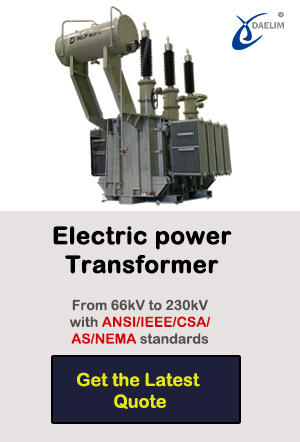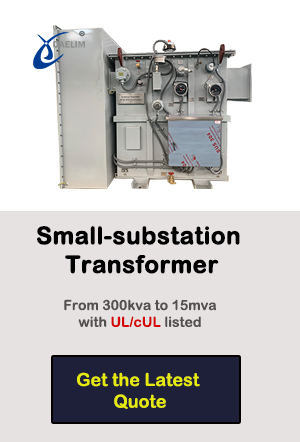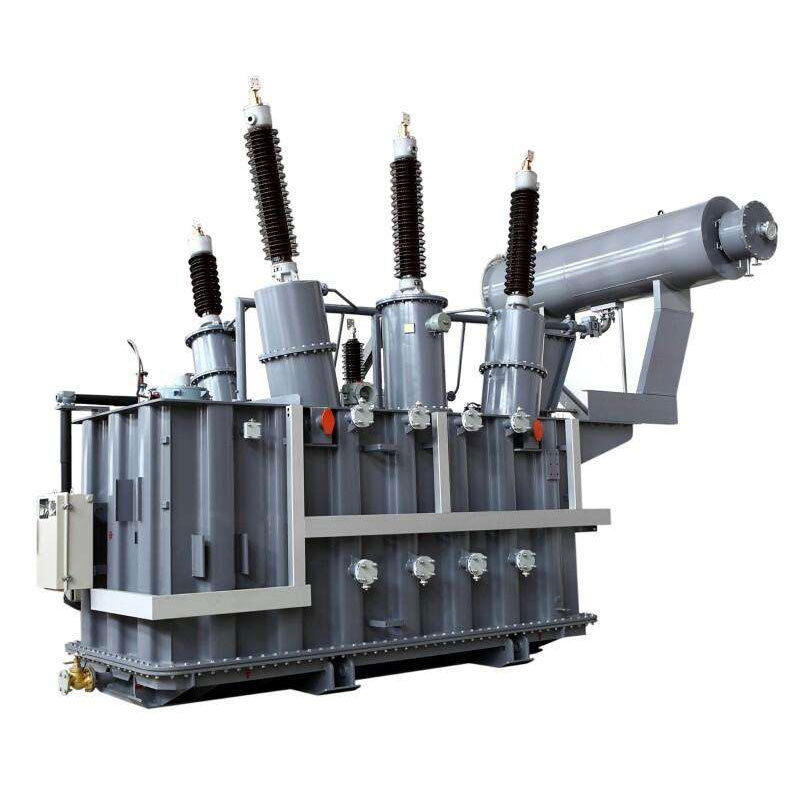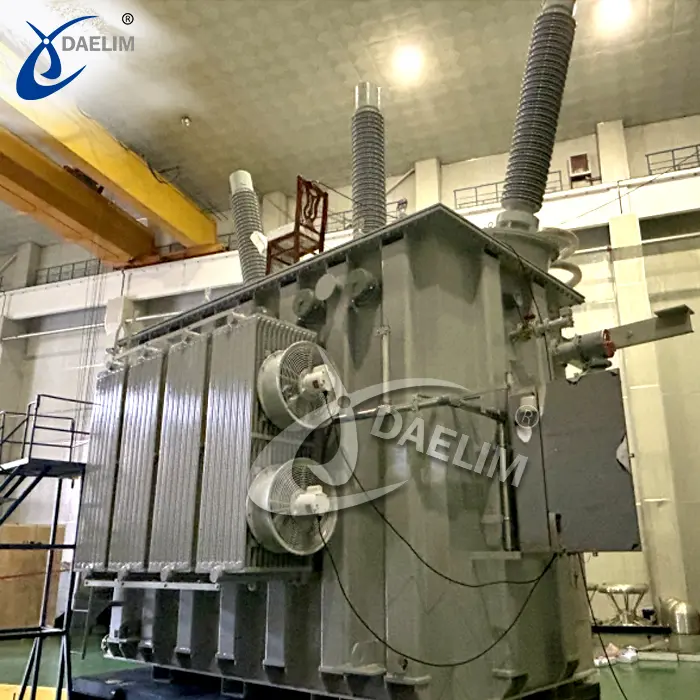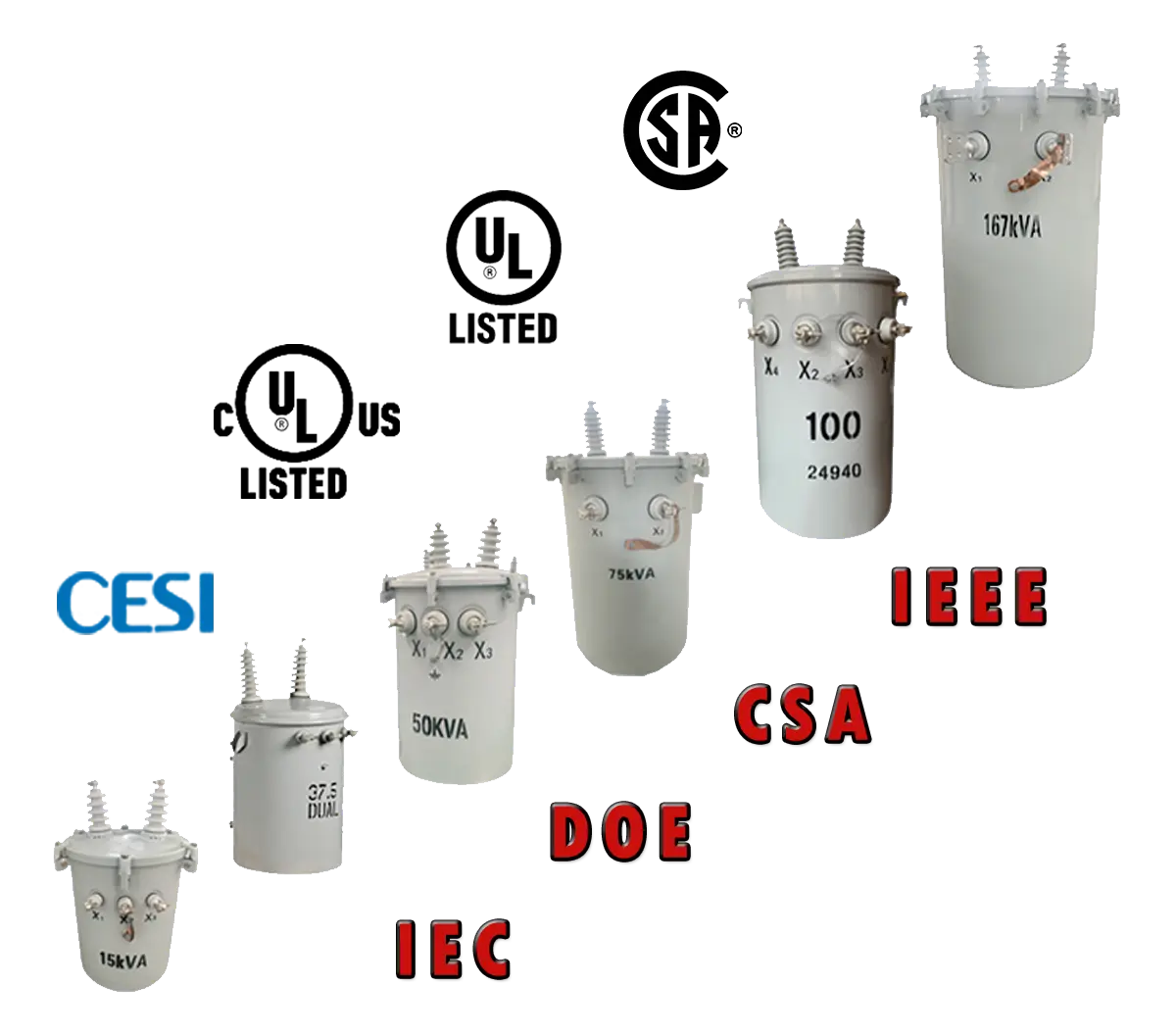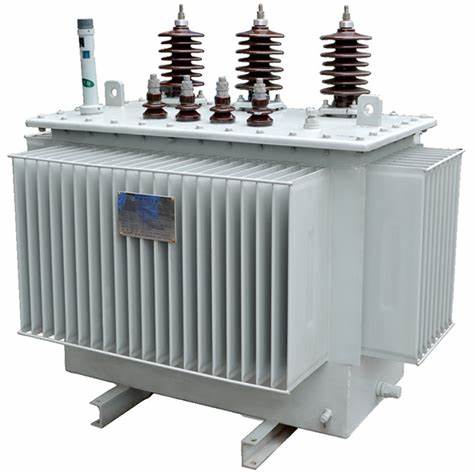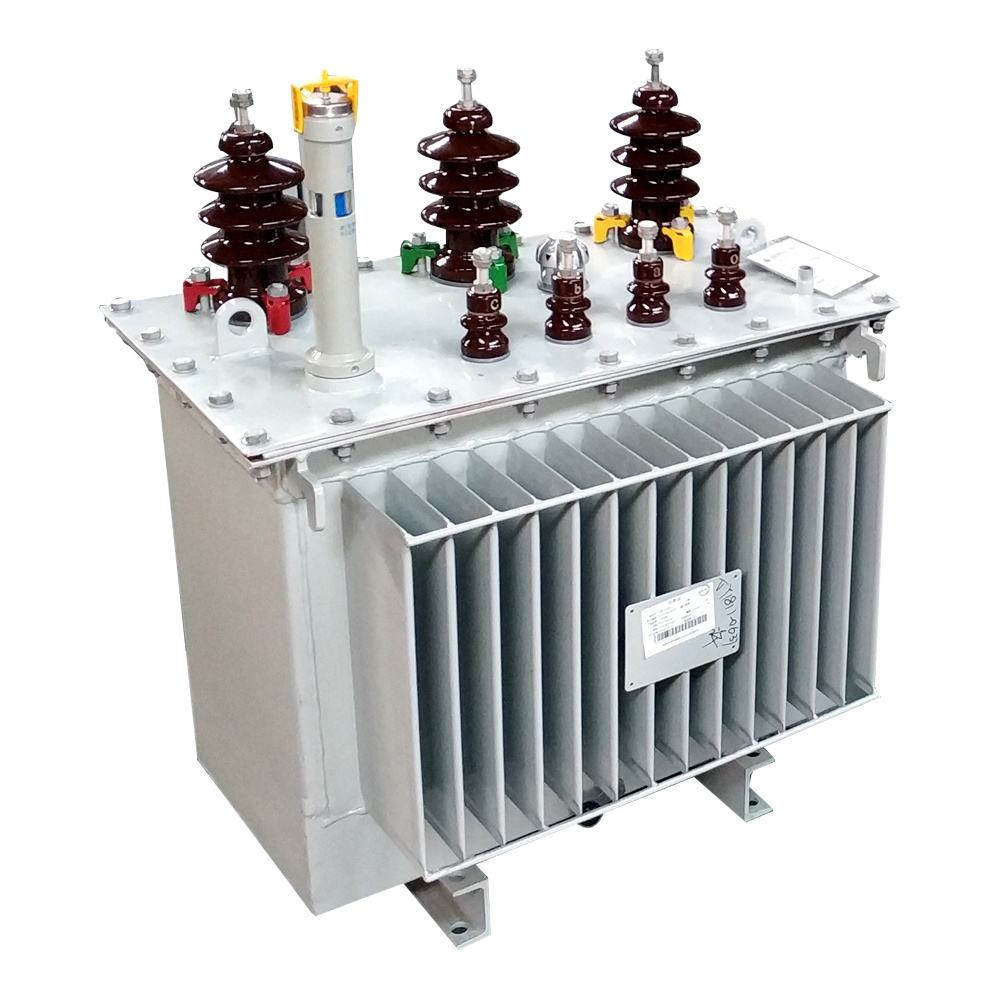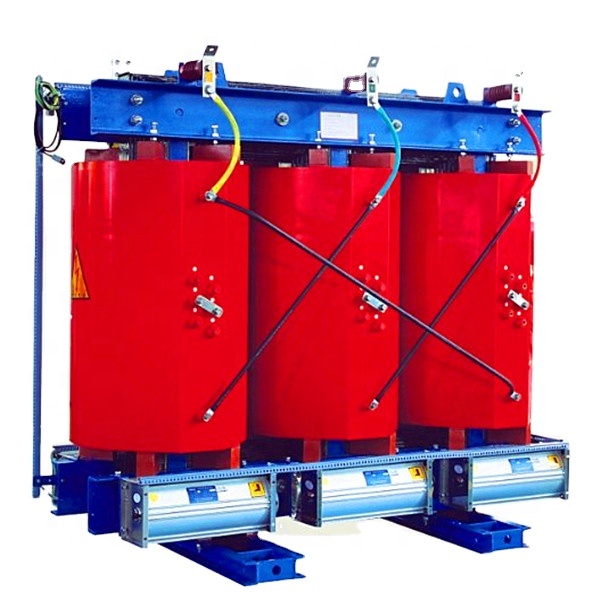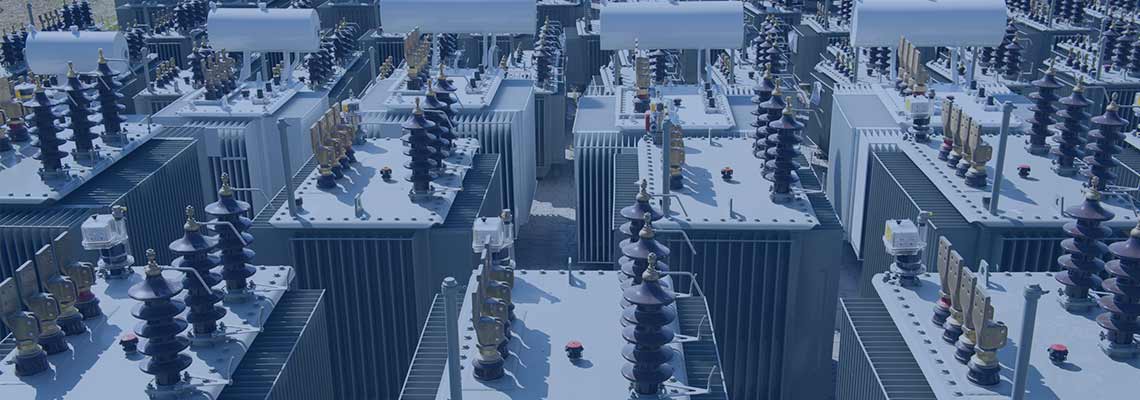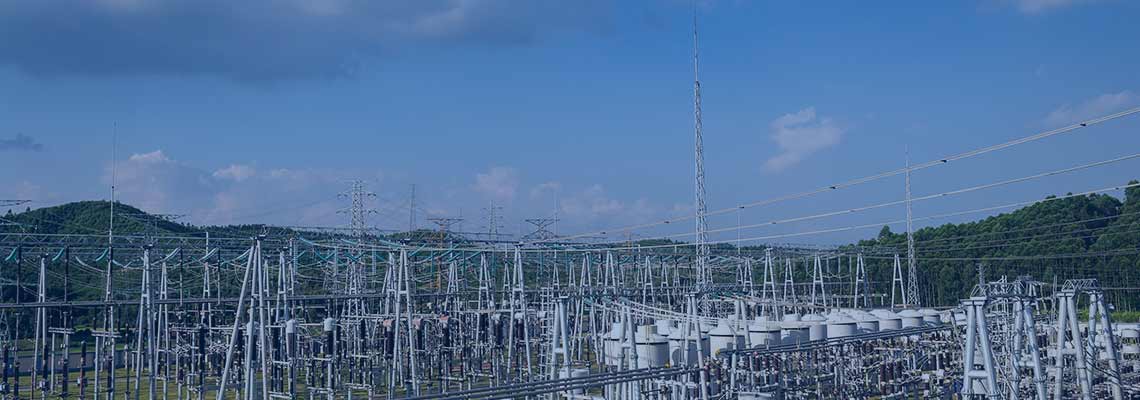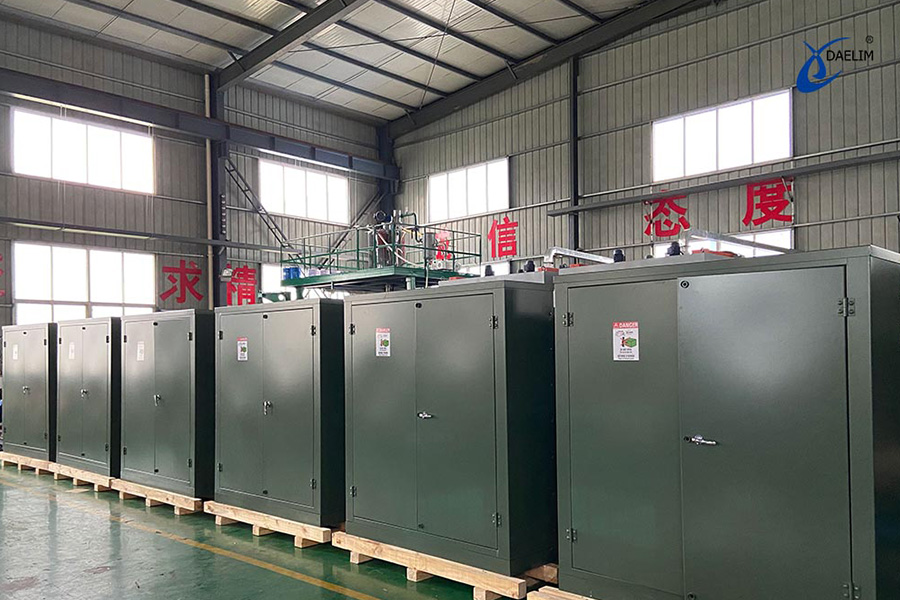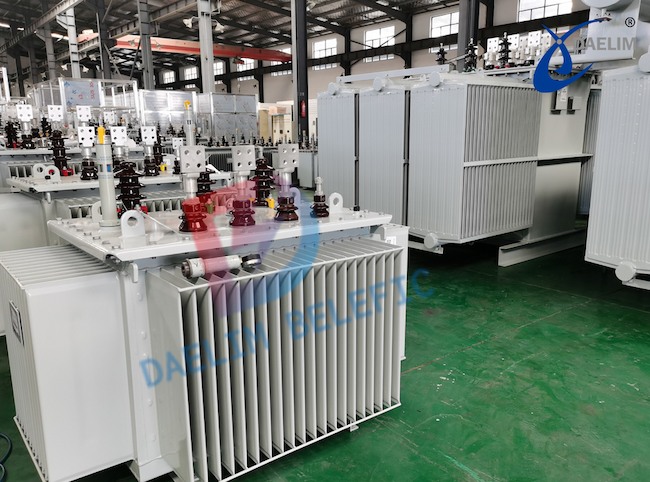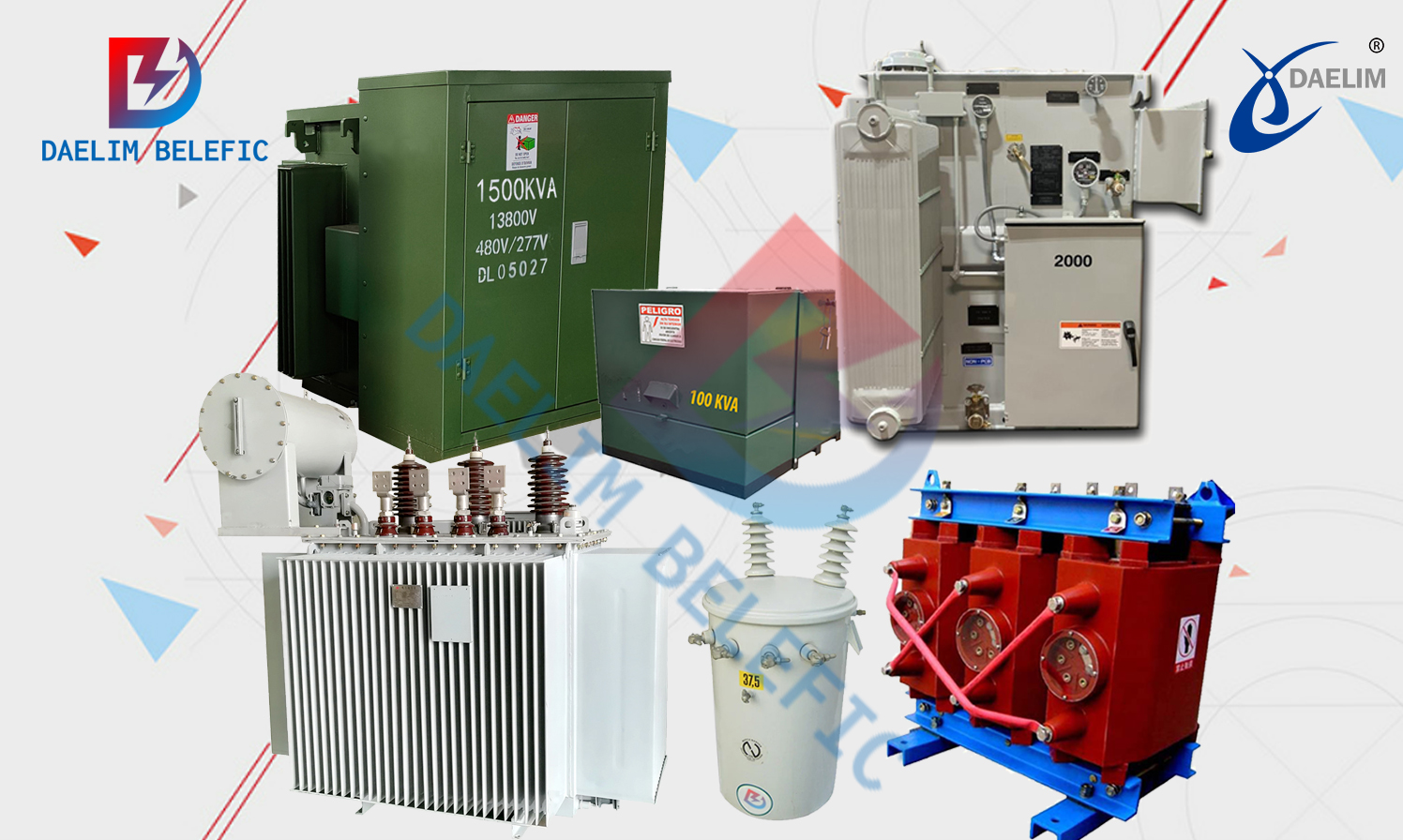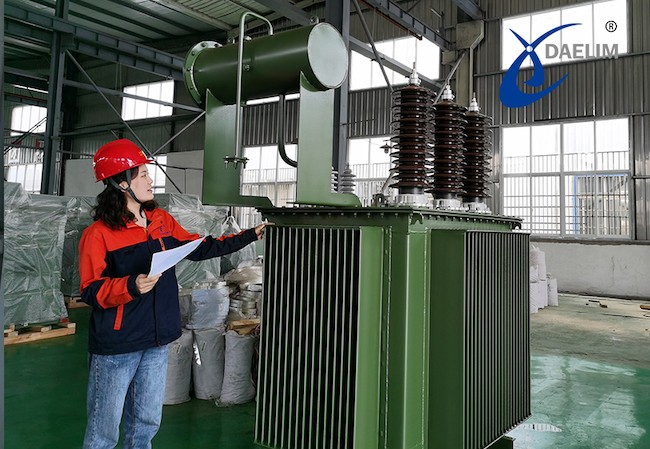What you need to know about Large power Transformers?
This paper introduces the meaning of large power transformers, components, manufacturers, cooling methods, inspection, and maintenance of basic knowledge.
Daelim manufactures large power transformers with excellent quality, high-cost performance, a short delivery cycle, and good after-sales service. Daelim exports large power transformers to the United States, Canada, Australia, and many other countries, with a very wide market in North America. Please contact me free~
What is a large power transformer?
A large power Transformer belongs a kind of power transformer. Transformer A type of transformer classified according to its use. In electric power transmission and distribution systems, a power transformer is one of the necessary equipment. In addition to power transformers, transformers can be divided into test transformers, instrument transformers, and special purpose transformers according to their uses.
Read more: Basic knowledge about the use of transformers
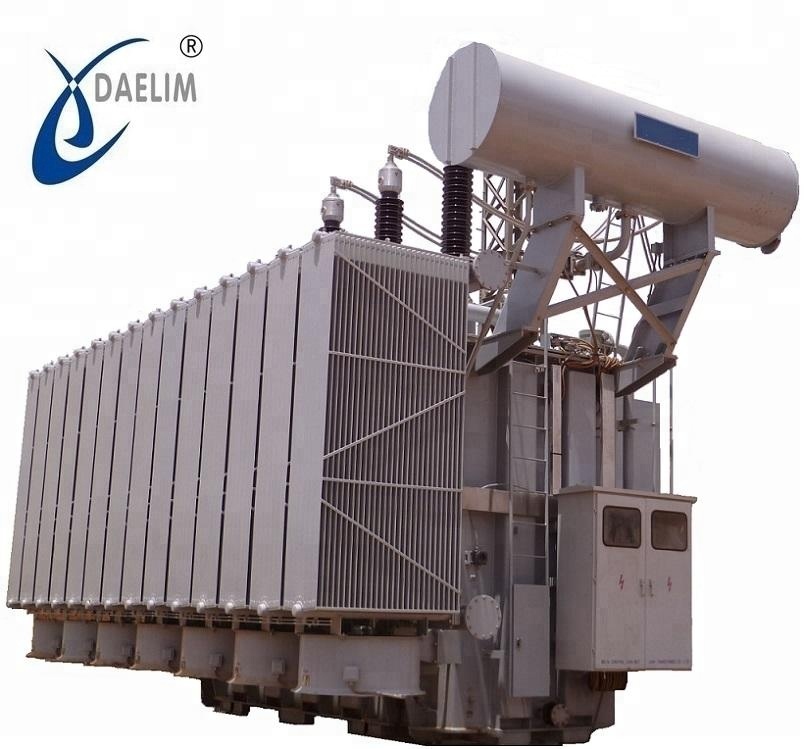
Large power transformer components
The main body of the magnetic circuit of a large power transformer is the transformer core, common two types are the core column and iron yoke, and both have different effects, the core column is mainly used to suit winding, and the iron yoke is can make the magnetic circuit to form a closed loop, in order to reduce the loss of the core within the variety so as to strengthen the core ability of permeability. The core material of the press is 5% silicon content, and the thickness is generally 0.35mm to 0.5mm two kinds, very thin, on both sides of the core coated with insulating paint or after oxidation treatment of silicon steel sheet mutual superposition device is also possible.
The structure of a large power transformer core is divided into the common two kinds of circumstances, is often used in power transformer with absorption type structure, namely the transformer primary winding and the auxiliary winding suit respectively on both sides of core on the two core column of structure is very simple, good suit after former vice winding formed around the core columns, the middle is hollow. Another kind of core structure is shell type transformer, the structure of the core is "day", the core surrounded by the group is the upper, lower and side around, the production is very complex, generally small dry type pressure device is often used in this shell type transformer device method.
Transformer windings are also one of the structures of large power transformer, generally USES aluminum wire winding or copper wire is made and be become, can produce winding magnetic flux and the induction motor and thus become the current main carrier, according to the high or low voltage winding coil can be divided into high voltage and low voltage windings, around in a different way of magnetic induction effect is also different, If high and low voltage winding is lined up on the two a core column and high voltage winding in the low voltage winding around the outside, and with iron acquisition edge of the way around is called the concentric winding, namely, high and low voltage winding around the same core winding structure is simpler, and the concentric winding different another structure called overlapping windings, A KNOT IN WHICH HIGH - and LOW-voltage WINdings ARE separated INTO pie - shaped coils interleaved on core columns according to their height.
In a large power transformer in addition to the above two parts of the main components, there are some small accessories to form, such as an oil tank, switch, temperature measuring device, etc., but the temperature measuring device used by large transformers are generally pressure thermometers.
Learn more: 20 MVA Transformer: The Ultimate FAQs Guide - Daelim
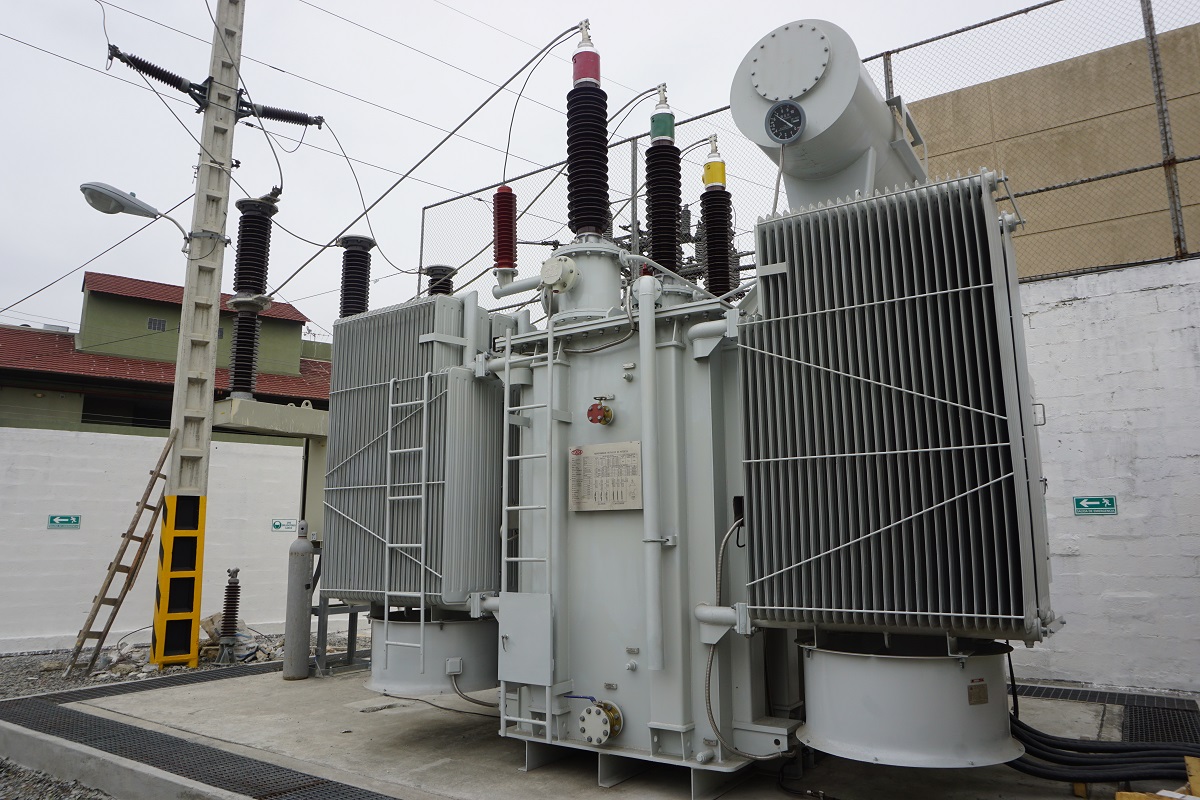
Who makes large power transformers?
The manufacturing of large power transformers has high requirements on the environment, capacity, and technology of workers, which is different from small power transformers. Beijing Daelim has many years of experience in the manufacture of large-scale power transformers and meets various international standards. Large power transformers are mainly used in substations, heavy industries, and other industries, and can meet the large demand for electricity. Daelim manufactures and exports large-scale power transformers to the United States, Canada, Australia, and other countries, with rich export experience.
Get it now: Step Down Transformer: The Ultimate FAQs Guide - Daelim
What are large transformers used for?
The large power transformer is one of the main pieces of equipment in a substation or power plant. Large transformers have a variety of uses, they can increase the voltage so as to send power to the power area with a small loss and can reduce the voltage to various levels the voltage can be used to meet the needs of different users. In a word, transformers can be used in the electrical system to complete the role of boost and step-down. In the process of electric energy transmission in a power system, certain voltage and power loss will be generated. Large power transformers are used to increase voltage during transmission to reduce transmission losses.
Enjoy free: Types of Transformers: The Ultimate FAQs Guide - Daelim
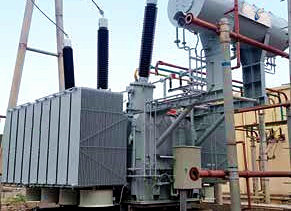
What is the highest voltage transformer?
The working voltage of the transformer is generally 10kV, 12.47kV, 13.8kV, 34.5kV, and so on. Generally, the working voltage of large power transformers is higher, basically at 34.5kV and above. Beijing Daelim manufactures transformers of various voltages and capacities, including a 10kV transformer, 12.47kV transformer, 13.8kV Transformer, and 34.5kV transformer. All transformers manufactured by Daelim will pass strict tests before leaving the factory, including lightning shock test, power frequency voltage withstand test, temperature rise test, leakage test, and so on.
Read my article on: 1 MVA Transformer: The Ultimate FAQs Guide - Daelim
How are large power transformers cooled?
The commonly used cooling methods of power transformers are divided into three types: oil-immersed self-cooling, oil-immersed air-cooling, and forced oil circulation.
1. Oil-immersed Self-cooling type (ONAN): The heat is carried to the tank wall and the heat dissipation tube by the natural convection action of the oil. It then relies on the convection conduction of air to send the heat away, and it has no special cooling equipment.
2. Oil-immersed air-cooled (ONAF): On the basis of the oil-immersed self-cooled type, a fan is installed on the oil tank wall or heat pipe, and a hair dryer is used to help cool. After the installation of air cooling. The capacity of the transformer can be increased by 30%~35%.
3. Forced oil circulation cooling (OFAF): It is divided into strong oil air cooling and strong oil water cooling. The basic principle is that the oil inside the transformer, using the oil pump, goes into the oil cooler and then back into the tank again. The shape of the oil cooler is very special, so it is easy to dissipate heat, which is taken away by fans or heat.
Read more: The ultimate guide to ONAN transformers
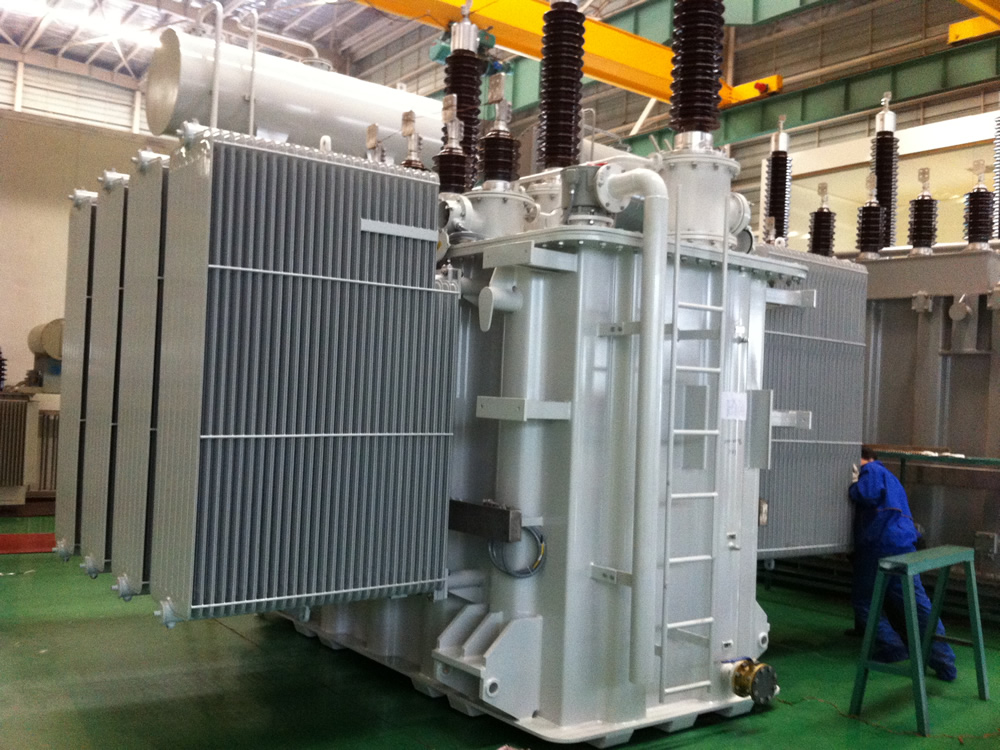
How to check large power transformers?
For large power transformers, all people on duty, each shift inspection once, no one on duty can be once a week, load change fierce, abnormal weather, new installation, and transformer overhaul, special inspection should be added, the cycle is uncertain.
1. Whether the load current is within the rated range, whether there is a drastic change, or whether the operating voltage is normal.
2. Whether the oil level, oil color, and oil temperature exceed the allowed value, and whether there is oil leakage.
3. Whether the porcelain sleeve is clean, whether there is a crack, damage, stain, or discharge phenomenon, whether the contact terminal is discolored, or overheating phenomenon.
4. Whether the silica gel discoloration degree in the moisture absorber has been saturated, and whether the transformer operation sound is normal.
5. Whether there is air in the gas relay, whether it is filled with oil, whether the oil level gauge glass is broken, or whether the diaphragm of the explosion-proof tube is complete.
6. Large power transformer shell, arrester, neutral ground is good, transformer oil valve is normal.
7. Whether the doors and Windows, shutters, iron mesh guardrail, and fire equipment between large power transformers are intact, and whether the transformer foundation has deformation.
Learn more: Dry Transformer: The Ultimate FAQs Guide - Daelim
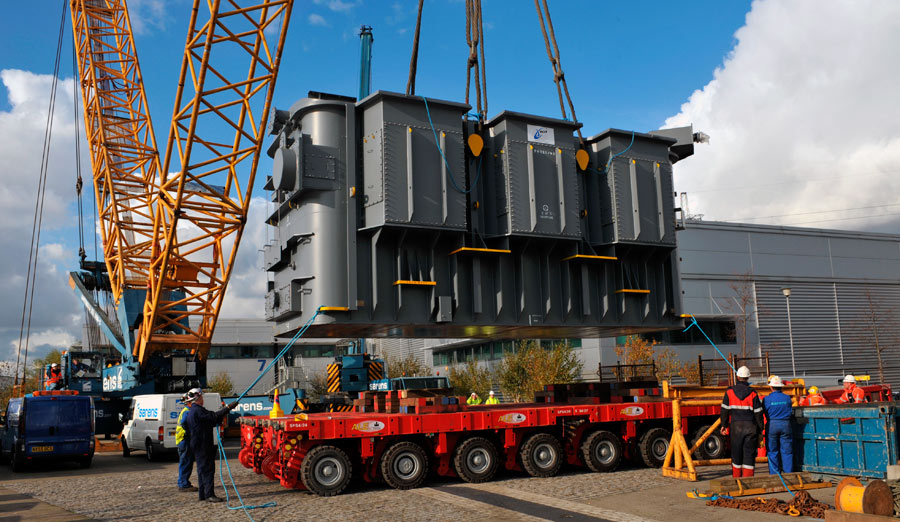
Operation and maintenance of large power transformer
The operation and maintenance of a large power transformer mainly include four aspects:
1. Basic requirements
1) High-pressure maintenance personnel must have a certificate, no certificate must not operate.
2) If a large power transformer is to be repaired without power, it shall be approved by the competent authority, and the users in the area shall be informed in time to avoid inconvenience.
3) Large power transformers should be tested for insulation oil annually or regularly.
2. The operation sequence of a large power transformer switch is as follows: first, stop the load side first, and then stop the power side after the power failure; When the transformer starts to deliver power, the sequence of operations is completely reversed.
1) The power is transferred step by step from the power supply side of a large power transformer to the load side. If a fault occurs, you can determine the fault scope and handle it in a timely manner to prevent the fault from spreading and expanding.
2) For large power transformers, if there is multiple power supply, stop the load side first to prevent the transformer from reverse charging. However, if the power supply side is stopped first, the protection device may be damaged in the event of a fault.
Get it now: 25kVA Transformer: The Ultimate FAQs Guide - Daelim
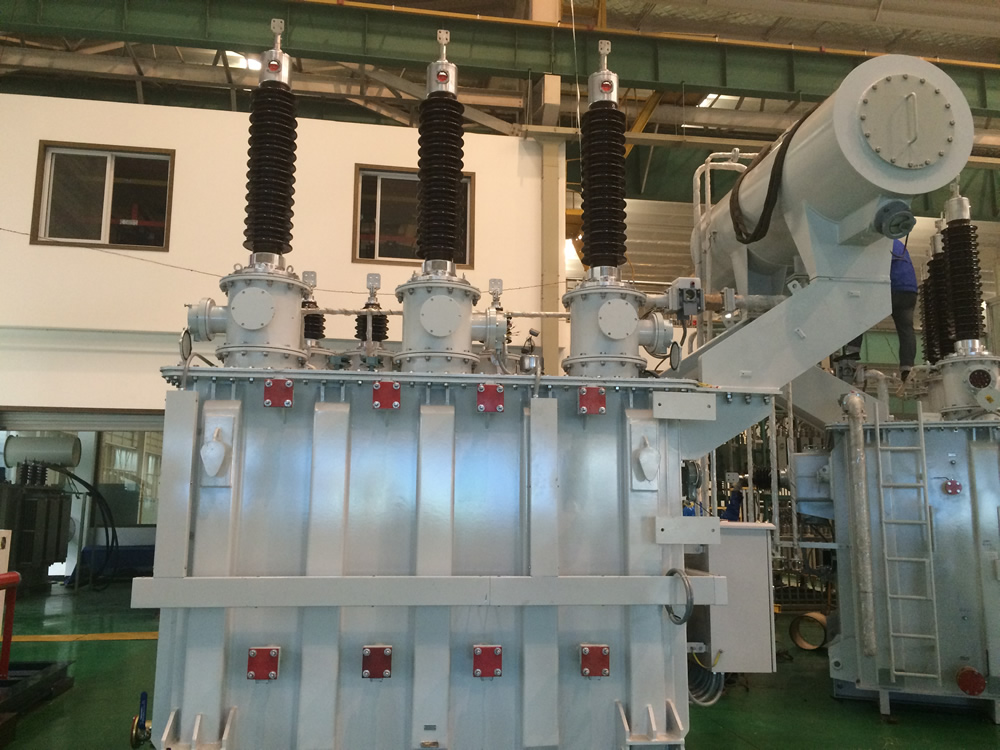
In conclusion
The above mainly introduces the basic knowledge of large power transformers, I believe that the large power transformer has a basic understanding. Daelim has accumulated rich experience in manufacturing large power transformers for many years. Beijing Daelim manufactures and exports many types of transformers. Substation Transformer such as Pad Mounted Transformer, Pole Mounted Transformer, Substation Transformer, Power Transformer. Welcome to consult at any time!
Related Products
Related Article
Pad Mounted Transformer Project Cases
3750kVA Primary 13.8kV, Secondary:0.415kV Loop-feed Pad-mounted Transformer, 12 sets for US market;
Transformer Neutral Protection Knowledge Guide
Daelim Transformer provides a comprehensive guide on transformer neutral protection, focusing on grounding faults. For directly grounded neutral points, zero-sequence current protection is recommended to isolate faults effectively. For ungrounded neutral points, zero-sequence voltage protection or gap zero-sequence current protection should be employed to prevent overvoltage risks. Additionally, transformers are equipped with various protective devices, such as gas protection, moisture absorbers, pressure release devices, and temperature measuring instruments, to ensure safe and efficient operation.
10kv Transformer The Ultimate FAQs Guide - Daelim
The 10kv transformer is usually referred to as a "distribution" transformer. This is because it uses the law of electromagnetic induction to transmit alternating current (AC) steps down the voltage from the primary to the secondary winding. The secondary winding provides the lower voltage that the customer uses.
Overview of Oil-Immersed Distribution Transformers
This article mainly describes the oil-immersed distribution transformer, including the oil transformer application, characteristics, types, and other issues of the transformer.

